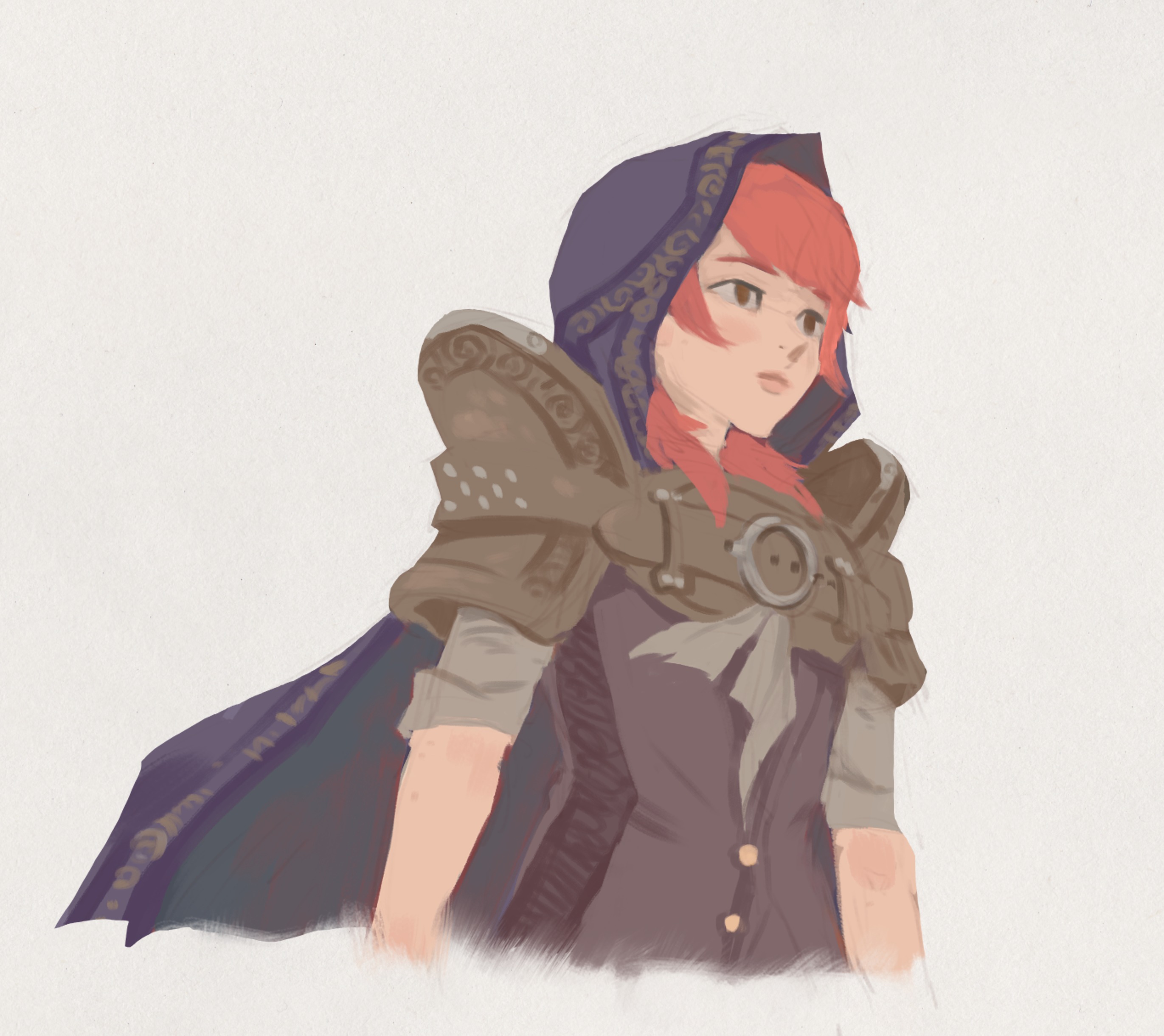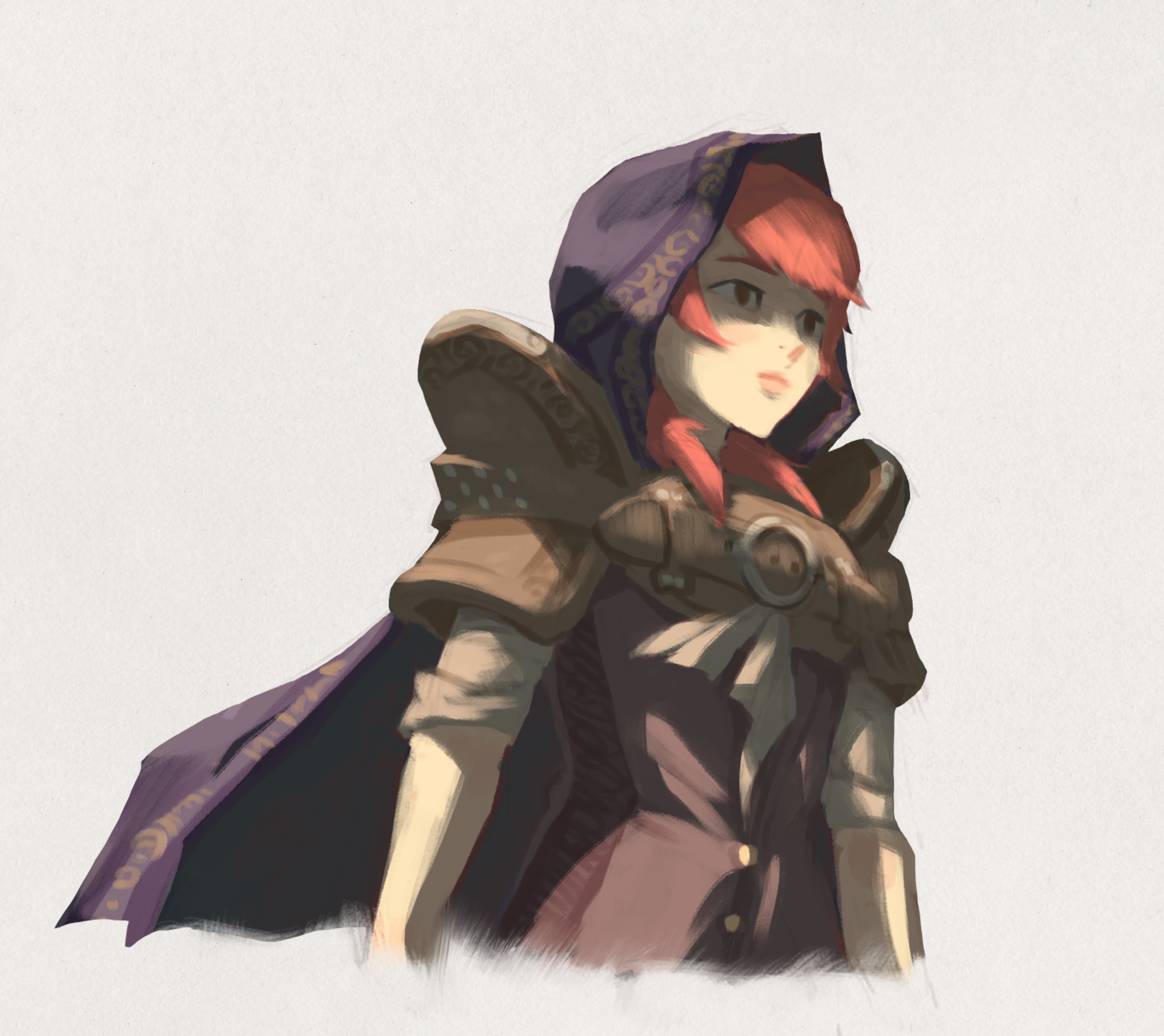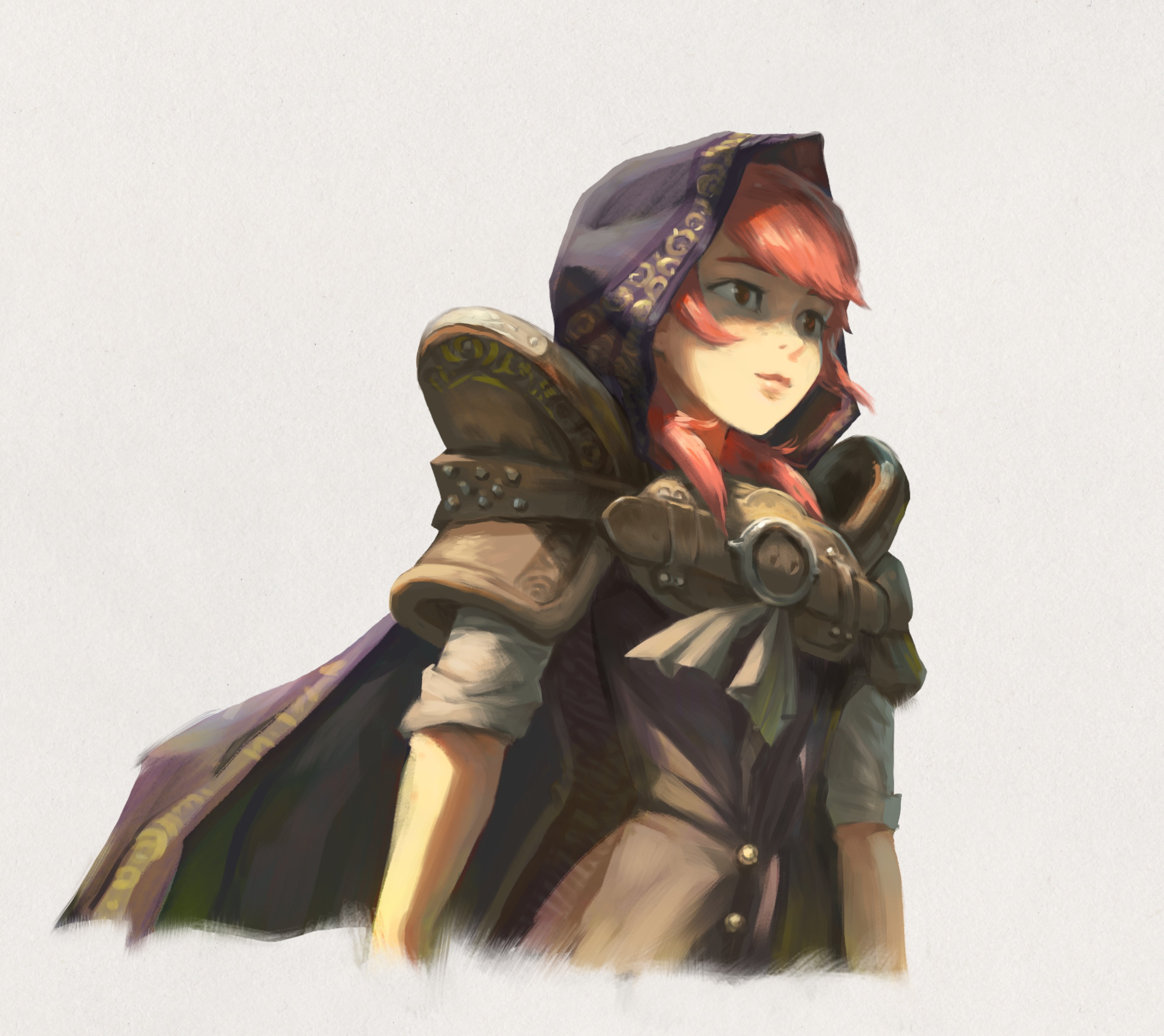A workflow experimentation that turned ok. I'm trying to capture a feeling of nostalgic (J)RPG, like a mix of old Zelda, Secret of Mana, but also series like Record of Lodoss War, all of that mixed with the high fantasy I also loved at that time, D&D, Magic the Gathering, DragonLance, etc... Hard to balance a painterly style, the type of design, and the mood. I study that for future P&C episode because I want to go into this direction.
Process
I also try to speedup and optimize my process a lot. I created new brushes for that, but I also learn to start painting differently. I'll give you a quick overview under:
Step 1: I keep a step where I draw before painting. I struggled a lot over the past year if I should keep this step as I saw I was more and more able to directly start with painting. But on my recent research, this temporary layer saves a massive amount of time. Getting the volume right (approximatively), the perspective and the proportion really avoid many post fix and post correction while painting. I'm resisting the urge to detail or design at this step; it's much more like a wireframe or a light outline of the 'low polygon' version of my topic.Working with segments not connected and a low opacity brush preset helps me to just draw what's necessary. Anyway, there is not a lot of pressure because I know all the pixels of this layers will never be visible on the final result.
Step 2: I changed my habits for this step too: I paint flat colors under the low opacity guideline. I usually will paint a 'precolor' with shadows and all. But I decided to merge some ideas of what I learnt with the 'comic/cartoon workflow with line-art' to my painterly workflow. During the process, I eventually turn off the visibility of the lines in mid way. I'm not only painting flat area of colors: I'm also painting the creases, the part where light can't reach. It's a sort of ambiant-occlusion; but not detailed. The goal here is to get my 'model' colored as if it was standing under a (cold) white neon light doing a 360° all around it. For some reason, it's easy for me to paint this way. I made myself a brush preset on Krita with hard edges and almost no opacity (unusual for my taste) to paint this step. Because of the omnipresent light, it's a good time to focus on the design of the shapes; how they read in perspective as 3D volumes, and how they feels as 2D shapes language: the angles, the primitive shapes (circles, triangles, etc) and a variety of them. I also can start to manage decoration and patterns at this step. It's totally not boring to paint this way (if I compare that to flatting for a comic line-art) I keep a real freedom and the guideline of (1) are quickly obsolete and removed. I can really see myself managing prototyping comic pages and start to work on the storytelling at this step.
Step 3: I try to approach shading very binary: or in light, or in shadow. I exclude the half tones, and this is not (here again) my comfort zone. I'm used to paint and do modeling directly with opacity on my brush. I made a softer brush to paint this step, because it allows me to do a little bit of modeling, I couldn't remove too much this habit. If the brush was too hard (eg. with a hard rounded brush, very clean) I wouldn't like to paint this step, I tried. I'm used to shade using one layer (with the "Hard Light" blending mode), but I discovered some advantage now to use two layers: a first one in "Multiply" to set the tone of shadows (the depravation of light, with a residual light coming from the surrounding), in this case a greyish cold to simulate a bit of color coming from a sky box. And for the other one, I create on the top a "Color Dodge" layer and paint with a warm grey on it. I found two advantages to manage my shading this way: the layer are flexible and I can summon the HSV adjustments anytime to adjust the delta between the light and the shadow, how cold/dark or how warm/bright they should be. I can imagine this might help with the consistency of light from a panel to another one. The second advantage is about using the E key of Krita as an eraser with my soft painterly preset on the light (Color Dodge) layer. I can adjust the good angle of the light and compute my brain-raytracing more easily. It's a good flexibility for the control of the art-direction, because you can test various setup if you get stuck. It's amazing how splitting that much light and shadow, in a more dramatic fashion of what I'm used to can improve the readability of the shapes. I can't wait to try that on comic panels.
Step 4: I flat all the previous steps to one "Normal" layer. Then I do some post adjustments. For example, a layer in "Overlay" on the top will manage very well some spikes of saturation (eg. see her hair or neck) and also manage the secondary light source (the bounce of green light on the floor, coming from grass, or the blue skybox from the top that neutralize many hue). I put a little Color Balance to yellowishify the tone of the picture. That's one advantage to flat all to a single layer (for the character): you can then use filters, or Gmic filters for color grading. I also adjusted the contrast (an important note here: I try to not crease to 100% black or white, tones should looks a little bit in a reduced color gamut , avoiding high saturation or to deep tones; it reinforces −probably because of our visual culture− the feeling of a painting). That's something I observed recently in many old school non-digital fantasy gouache painting scanned. My last step is to detail with a small rounded brush, but you'll see here I only painted on her face and around. It's not really about increasing the resolution of the whole piece, but just placing some accents of density of details here and there. That's also possible thanks to an advantage of this workflow: because there is no drawing or lines baked in the artwork at an early step, there is no need to perform an overall 'clean-up' at the detail step. Parts detailed are a bit blocky but still easy to read. That's a precious place to save time.
I'll continue to test this method for sure, and if my new brushes stabilize over the next week, I'll share them.





